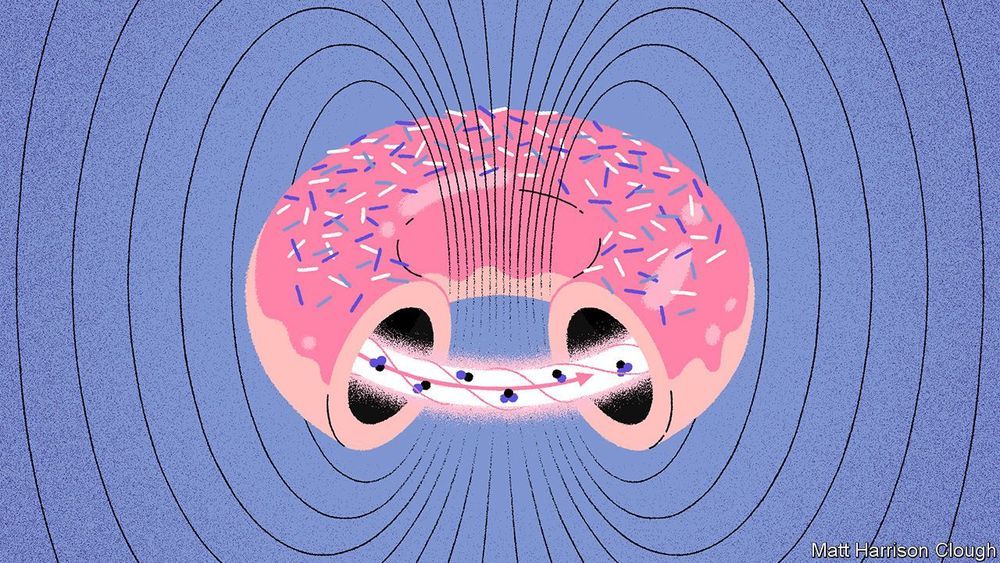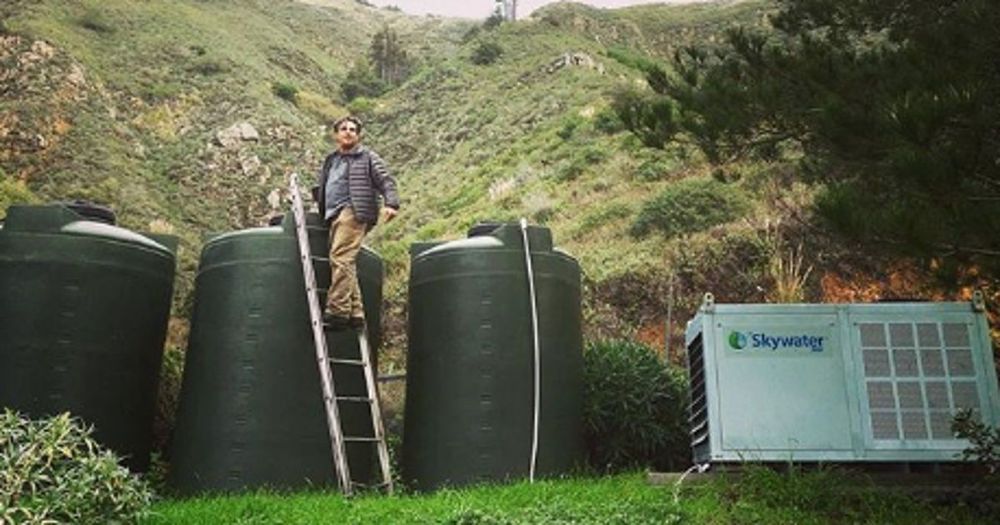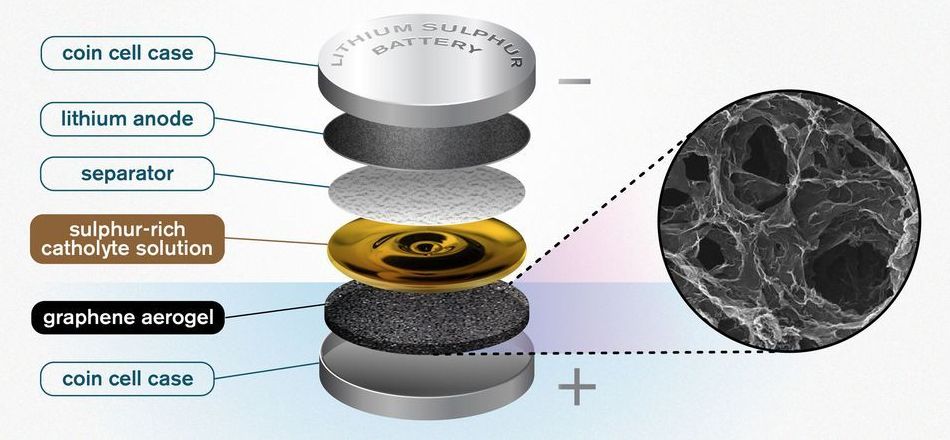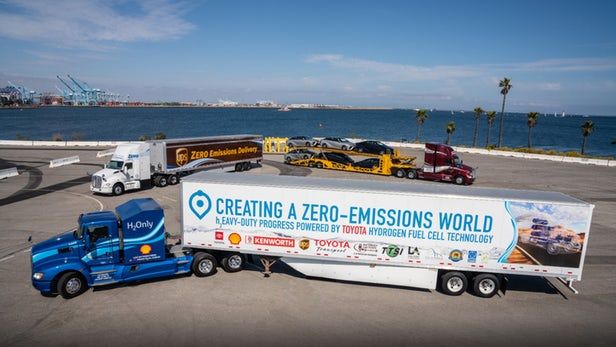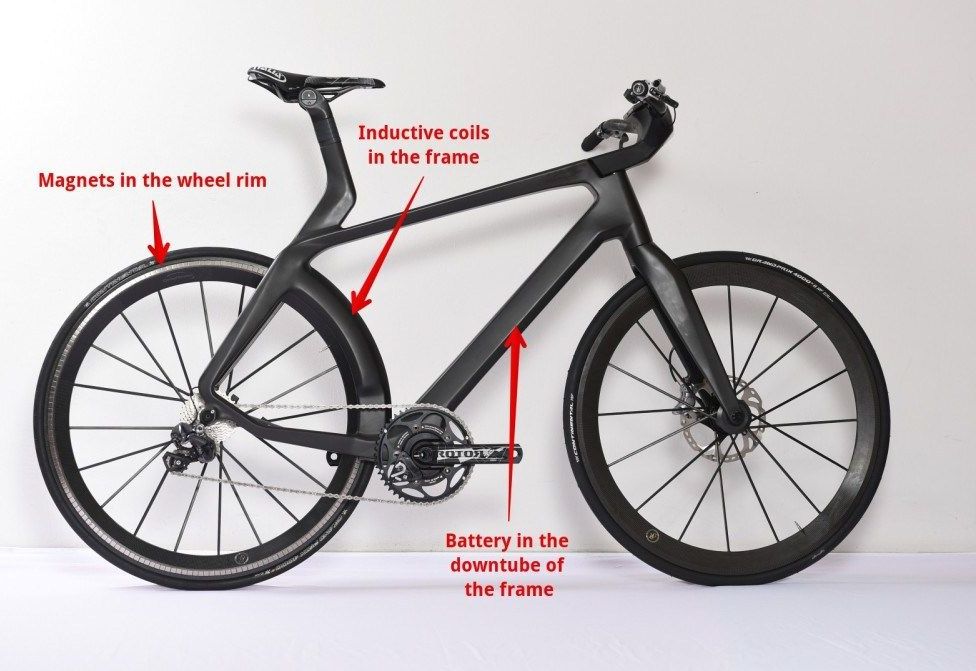Archive for the ‘energy’ category: Page 283
May 1, 2019
A Device That Harvests Drinking Water Out Of Plain Air Just Won $1.5 Million
Posted by Quinn Sena in categories: energy, sustainability
Two California designers have won a $1.5 million prize after building a shipping container that can harvest water from the air. David Hertz and Rich Groden were named the winners of the Water Abundance XPrize for their innovative creation, which can produce enough water to satisfy the needs of 100 people.
The competition, which began in 2016, asked designers to build a device that could extract at least 2,000 liters of water a day from the atmosphere while only using clean energy and costing no more than 2 cents a liter. Nearly 100 teams entered the challenge, which was eventually whittled down to two finalists. Hertz and Groden’s team, called Skysource/Skywater Alliance, won the prize because their invention “demonstrated the greatest ability to create decentralized access to water,” per a press release.
Apr 30, 2019
A Novel Liquid Battery Could Hold Potential For Unlimited Energy Storage
Posted by Quinn Sena in category: energy
Giant tanks filled with a liquid solution are offering a novel way to create a battery with unlimited capacity.
Apr 29, 2019
Graphene sponge helps lithium sulphur batteries reach new potential
Posted by Quinn Sena in categories: energy, materials
To meet the demands of an electric future, new battery technologies will be essential. One option is lithium sulphur batteries, which offer a theoretical energy density more than five times that of lithium ion batteries. Researchers at Chalmers University of Technology, Sweden, recently unveiled a promising breakthrough for this type of battery, using a catholyte with the help of a graphene sponge.
The researchers’ novel idea is a porous, sponge-like aerogel made of reduced graphene oxide that acts as a free-standing electrode in the battery cell and allows for better and higher utilisation of sulphur.
A traditional battery consists of four parts. First, there are two supporting electrodes coated with an active substance, which are known as an anode and a cathode. In between them is an electrolyte, generally a liquid, allowing ions to be transferred back and forth. The fourth component is a separator, which acts as a physical barrier, preventing contact between the two electrodes whilst still allowing the transfer of ions.
Continue reading “Graphene sponge helps lithium sulphur batteries reach new potential” »
Apr 28, 2019
Toyota unveils latest heavy-duty electric fuel-cell truck to haul cargo around LA
Posted by Quinn Sena in categories: energy, transportation
The latest version of Toyota’s zero-emissions fuel-cell powered tractor truck was unveiled today in Los Angeles. Developed as part of a joint project with the Kenworth Truck Company, the Port of Los Angeles, and the California Air Resources Board (CARB), the Fuel Cell Electric heavy-duty Truck (FCET) that runs on hydrogen and produces only water as waste is intended to meet or exceed the performance of a conventional diesel truck.
Apr 28, 2019
Earthquake science could have predicted North Korea’s nuclear climbdown
Posted by Quinn Sena in categories: energy, existential risks, nuclear weapons, policy, science
Just days after North Korea announced it was suspending its testing programme, scientists revealed that the country’s underground nuclear test site had partially collapsed. This assessment was based on data gathered from smaller earthquakes that followed North Korea’s biggest nuclear test in 2017. A new study published in Science has now confirmed the collapse using satellite radar imaging.
The collapse may have played a role in North Korea’s change in policy. If correct, and with the hindsight of this research, we might have speculated that the North Koreans would want to make such an offer of peace. This shows how scientific analysis normally reserved for studying natural earthquakes can be a powerful tool in deciphering political decisions and predicting future policy across the globe.
In fact, another unusual earthquake in South Korea in 2017 also has the potential to affect geopolitics, this time by changing energy policy. “Seismic shift” may be a cliche often used by journalists and policymakers to describe changing political landscapes, but these recent earthquakes along the Korean Peninsula remind us there can really be authentic links between seismic events and global affairs.
Continue reading “Earthquake science could have predicted North Korea’s nuclear climbdown” »
Apr 27, 2019
The U.S. Military: Like the French at Agincourt?
Posted by Derick Lee in categories: business, energy, military
“The traditional model of U.S. military power is being disrupted, the way Blockbuster’s business model was amid the rise of Amazon and Netflix,” Brose writes. “A military made up of small numbers of large, expensive, heavily manned, and hard-to-replace systems will not survive on future battlefields, where swarms of intelligent machines will deliver violence at a greater volume and higher velocity than ever before.”
America risks a catastrophic defeat if it doesn’t radically change the way it thinks about war.
Apr 24, 2019
Researchers dramatically clean up ammonia production and cut costs
Posted by Quinn Sena in categories: energy, food
Ammonia—a colorless gas essential for things like fertilizer—can be made by a new process which is far cleaner, easier and cheaper than the current leading method. UTokyo researchers use readily available lab equipment, recyclable chemicals and a minimum of energy to produce ammonia. Their Samarium-Water Ammonia Production (SWAP) process promises to scale down ammonia production and improve access to ammonia fertilizer to farmers everywhere.
In 1900, the global population was under 2 billion, whereas in 2019, it is over 7 billion. This population explosion was fueled in part by rapid advancements in food production, in particular the widespread use of ammonia-based fertilizers. The source of this ammonia was the Haber-Bosch process, and though some say it’s one of the most significant achievements of all time, it comes with a heavy price.
The Haber-Bosch process only converts 10 percent of its source material per cycle so needs to run multiple times to use it all up. One of these source materials is hydrogen (H2) produced using fossil fuels. This is chemically combined with nitrogen (N2) at temperatures of about 400–600 degrees Celsius and pressures of about 100–200 atmospheres, also at great energy cost. Professor Yoshiaki Nishibayashi and his team from the University of Tokyo’s Department of Systems Innovation hope to improve the situation with their SWAP process.
Continue reading “Researchers dramatically clean up ammonia production and cut costs” »
Apr 24, 2019
Lightweight Velocité“Maglev” Hidden Motor Electric Bike
Posted by Quinn Sena in categories: energy, transportation
Imagine that instead of adding a motor to a bicycle, parts of the bicycle are designed to function as the motor.
In this case the wheel rim contains the motor magnets and the frame houses the inductive coils. The inductive coils use energy from the battery (hidden in the frame downtube) to repel the magnets on the rim to make the wheel spin.
Lightweight calls this “Maglev Transrapid technology” and they claim that this Velocité eBike can go up to 100 kph (62 mph) with its 500 watts of power! They are currently limiting it to 45 kph (28 mph) to fall with in the limits of a speed pedelec.
Continue reading “Lightweight Velocité‘Maglev’ Hidden Motor Electric Bike” »
Apr 24, 2019
Developing roads that can generate power from passing traffic
Posted by Quinn Sena in categories: energy, transportation
Circa 2017
Researchers are looking at advanced materials for roads and pavements that could generate electricity from passing traffic.
Engineers from Lancaster University are working on smart materials such as ‘piezolectric’ ceramics that when embedded in road surfaces would be able to harvest and convert vehicle vibration into electrical energy.
The research project, led by Professor Mohamed Saafi, will design and optimise energy recovery of around one to two Megawatts per kilometre under ‘normal’ traffic volumes—which is around 2,000 to 3,000 cars an hour.
Continue reading “Developing roads that can generate power from passing traffic” »
